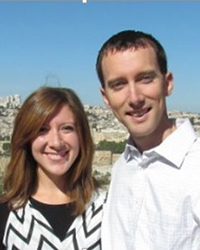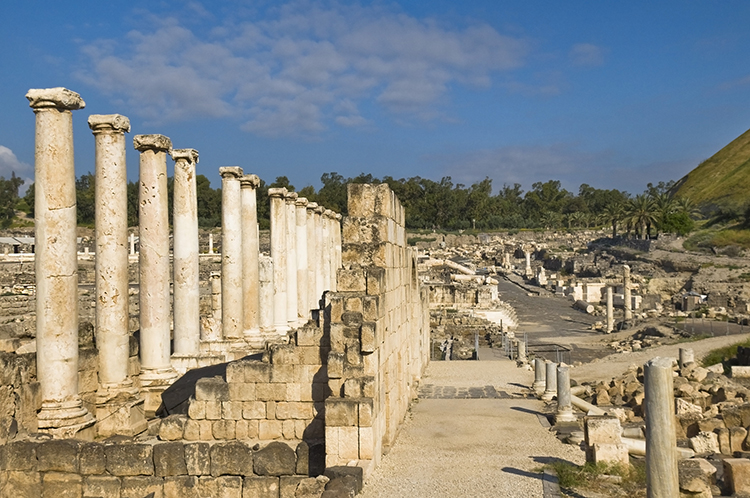

by Trent and Rebekah Dutton
Synopsis: Trent and Rebekah discuss Bet She’an, an ancient city strategically located at the crossroads of culture and history.
The ancient city of Bet She'an (Beit Shean, Beth Shean, Beth Shan, Bethshean, etc.) first appears in the biblical narrative of the conquest, when the city was given to Manasseh as part of her allotted territory. The tell is beautifully strategic, located at the junction of the Jezreel and Jordan Valleys, commanding a fantastic view of the surrounding countryside. However, Manasseh allowed this fortress city to slip through her fingers due to the iron chariots of the Canaanite inhabitants.
What Manasseh gave up, the Philistines were happy to acquire. In 1 Samuel 29, the Philistines prepare at Aphek for another episode with the Israelites. This is where David was sent away, their supposed ally. The battle against Israel was brutal, and, in 1 Samuel 31, the royal family falls at Mt. Gilboa. In triumph, the Philistines hang the headless bodies of Saul and Jonathan on the fortress walls at Beth Shean.
Recalling Saul's kindness, the men of Jabesh Gilead removed the bodies in the night—a valiant deed, as they covered miles of open territory and scaled the side of a fortified and guarded city. David would go on to take Beth Shean, and Solomon would place the city under the administration of Baana.
That is the core biblical story of this timeless city. Afterward, it was destroyed by the Assyrians and not occupied again until coming under the control of Alexander the Great. He settled his garrison of Scythians here, thus changing its name to Scythopolis.
The city would later be caught in the crossfire between the Ptolemies and Seleucids, and Josephus gives the account that High Priest Jonathan was kidnapped there and later murdered—one of the events leading to the Maccabean Revolt.
In 63 BC, Pompey gathered Beth Shean under his wings as a city of the Decapolis. It was beautified, with theaters, amphitheaters, a cardo, bathhouses, and a rather nice public toilet. All of these items garner the most photos by visitors at the site today.
Whether a crossroads of trade routes and water, such as Ashkelon or Tyre, or those landlocked focal points of trade routes, such as Megiddo or Hazor, cities such as these, and Beth Shean, boast a historical and archaeological record that is often hard to comprehend. These cities provide an archaeological profile that complements the biblical text and provides insight into the landscape and material culture of the inhabitants. This is one more site to tuck away for use as a geographical and archaeological reference point for the textual narratives that touch it.
Author Bio: Trent and Rebekah both hold Master's degrees in Biblical Archaeology from Wheaton College in the Chicago, IL area. They have participated in four full excavation seasons with the Leon Levy Expedition to Ashkelon, Israel, and two seasons at Tel Shimron in the Jezreel Valley. They can be reached at trentdutton@gmail.com.

Image 1: View from the Iron Age (David/Solomon era) summit of Beth Shean looking east toward Gilead

Image 2: Remains of an Iron Age fortress at the summit of Beth Shean

Image 3: Greek and Roman era lower Beth Shean, known as Scythopolis